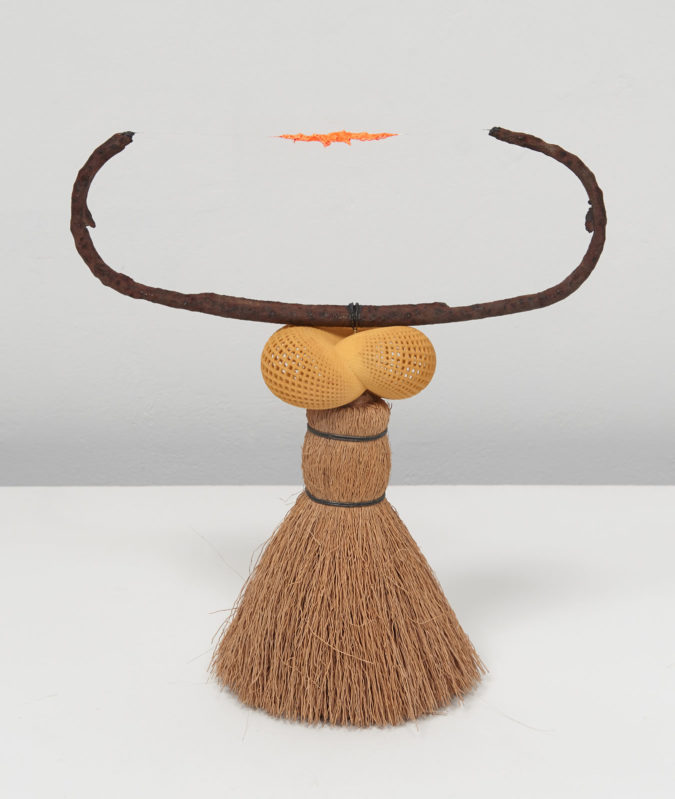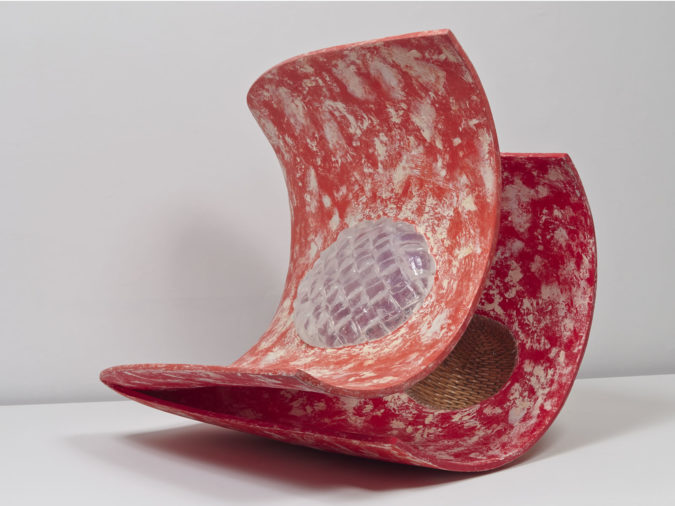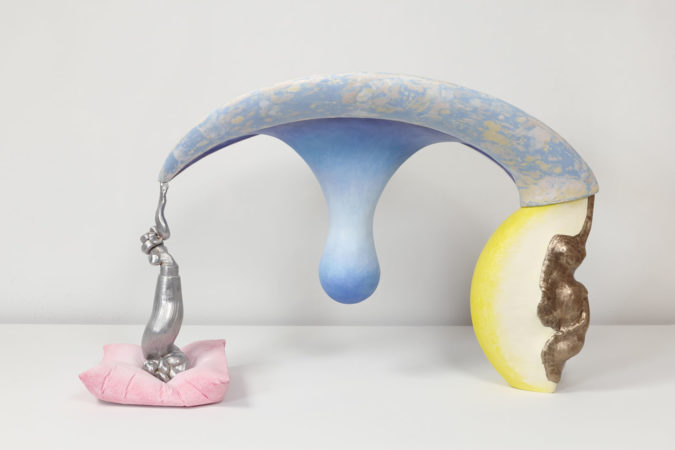John Newman
John Newman is a New York-based artist. He was born in Flushing, New York, and received his BA from Oberlin College. He attended the Whitney Museum Study Program in 1972, received his MFA in 1975 from the Yale School of Art, and was a fellow at the Center for Advanced Visual Studies at MIT from 1975-78. He has had over 50 one-person shows and participated in numerous group exhibitions in galleries and museums throughout the United States, Europe, and Asia.
Newman’s sculpture, drawings, and prints are represented in numerous public collections including the Museum of Modern Art, the Metropolitan Museum, the Whitney Museum, the Tate Modern in London, the National Gallery in Canberra, the Alberina Museum in Vienna, among many others.
John is the recipient of many awards and residencies, including the Rome Prize, the Civitella Ranieri Foundation, the Guggenheim Foundation, the Joan Mitchell Foundation, the Pollack-Krasner Foundation, the NEA, and a Senior Research Fulbright Grant to India.
Newman is the former Director of Graduate Studies in Sculpture at the Yale School of Art. He currently teaches at the NY Studio School and the School of Visual Arts in New York City. He has been commissioned to do several large-scale sculptures for the City of Richmond, VA, Dai Nippon in Tokyo, Storm King Art Center, and Grounds for Sculpture in Hamilton, NJ.
Question:
“Your work is noted for its material hybridity, for surprising, unusual and diverse conjunctions of media. Yet despite this diversity you have talked about these combinations as “liver transplants,” a metaphor for the fact that some material or formal conjunctions do not necessarily “take,” that the sculpture “rejects” them. Could you discuss how this process works, why some transplants are successful and some you feel will not hold?”
Answer:
Yes, I have often mentioned what I call my “liver transplant theory”…which I realize could sound a bit cheeky. Of course, I meant this as a metaphor. Liver transplants are indeed serious matters and I don’t want to make light of them. What I meant by this was a way of addressing the fact that by using several component parts that make up a sculpture… and parts that are often far afield in terms of wildly diverse materials or methods of making…. a condition is set-up where the interdependence of these parts is just as crucial as the parts themselves.
An old girlfriend of mine’s daughter used to tease me in slightly aggressive adolescent way and try and shove any old thing into my hand and say “here, see if you can put that in a sculpture!”. I remember being terrifically irritated by this thinking it disrespectful but she actually did me a favor. The point is that any old thing cannot just be in the sculpture; and cannot necessarily be made or forced to fit (to cite John Chamberlain’s wonderfully clever euphemism about what he thought sculpture was all about).
In the 90’s I began traveling the world a good deal. I was impressed by how many other cultures seemed to have a very meaningful involvement with certain objects. At this same time, the Western art world was steeped in journalism, sensationalism and spectacle and installation arose as the prevailing mode subsuming our generalized notions about sculpture.
I began thinking that intimacy was something missing from current sculpture’s lexicon. And I began making small objects using many unusual materials that often had a lot of color. A sculpture you needed to be close to.
These sculptures began based on the drawings I made while traveling. Drawings of “speculative sculptures” rendered yet imagined sculptures that did not suffer from the exigencies of gravity, adhesion or stance. These “speculative sculptures” as drawings were never intended to be made as such; they were more like travel notes. But upon arriving home I thought I would give myself the challenge….almost a conceit in reversing the process…and try and actually make them.
This is where I first began to think of materials as metaphors; that all materials have meaning because of their particular properties along with their attendant associations. Glass clearly means something different than lead; wool different than wood. And when different materials are put together… like a metaphor in poetry… a third meaning could arise and thus a broader possibility for signification.
After awhile, another thought arose about the scale of the sculptures. What impressed me about the Japanese teacup, the Congo power god, the anaconic stone adorned with flowers in the center of an Indian village was that they might be small in size but certainly not small in significance. I was also interested in the idea that objects like the DNA model or globe of the world, information bearing objects, had a huge disconnect between the object itself and the space it represented. I began to think about what I wanted to call a “scaleless” object. I was prepared to admit that this might be a rhetorical conceit but I did indeed think it raised important issues about sculpture and broader possibilities for experiencing it.
Size is calibrated. Scale is felt. They are both based on a premise. For example, on the one had, inches versus centimeters. And other hand, there is shared space where body relationships and behavior are the primary premise. There is also the space of images, pictorial space, where figurative sculpture resided before the polemics of Minimalism. There is the space of a model or maquette, where one can imagine oneself very small walking within the object or looking down above it. And there is the space of utilitarian objects…that which is handled… and the haptic.
When I was a young artist in the early 70’s there was a lot of discussion about reaching the “zero degree”, the inevitability of Modernism’s reduction. Things were often defined by what they were not, in binary opposition. The question for me was always “what happens on the other side of zero?”.
In mathematics, there are irrational numbers on the other side of zero and they behave quite differently. In physics, there is the quantum world. I suppose we could maybe add the unconscious and fantasy projection, what is on the other side of Alice’s mirror. And much of the confusion over the cumbersome term “post-modernism” seems to have a good deal to do with identifying a term that encapsulates this idea.
One thing we do know is that things are no longer, easily defined by binary opposition. In fact, binary opposition always implies a third position in-between the two sides….not unlike a metaphor…and therefore we can begin seeing things more as a spectrum than an opposition.
In the sum of its parts, there is only the parts, writes Wallace Stevens. But in language, let alone in poetry, we know that meaning is always greater than the collection of words. In a similar sense, a jazz musician has twelve notes to infinitely improvise with but indeed it is not the series of notes that makes the magic of music but the feel and the flow in time.
The notion of the “liver transplant theory” was a way of considering the complex whole of a sculpture, at least one of my sculptures. I do not have a recipe or a prescription for what “takes” or what doesn’t. I only know that now, after working on sculpture for almost 40 years, I am aware of all this described above… and I can only rely on trust.








